Comprehensive System Design and Analysis for Golden North Ice Cream
VerifiedAdded on 2023/06/09
|12
|2788
|124
Report
AI Summary
This report provides a detailed system analysis and design for Golden North Ice Cream, an Australian ice cream company, aiming to establish an e-commerce web application. It begins by outlining the system architecture, reflecting a native e-commerce structure, and proposes a cloud-based hosting environment for its benefits in security, flexibility, and cost-effectiveness. The report then delves into user interface design, discussing best practices like understanding target users, utilizing familiar design patterns, ensuring consistency, employing visual hierarchy, providing feedback, tolerating errors, and maintaining simplicity. Storyboards illustrate user interactions with the website. A significant portion addresses security concerns, including credit card fraud, denial-of-service attacks, man-in-the-middle attacks, malware, and phishing, along with mitigation strategies such as PCI compliance, address verification, strong passwords, and SSL certificates. Finally, the report details a system deployment plan, covering implementation, testing (functional, usability, interface, security, and performance), and deployment steps, emphasizing continuous support and monitoring.
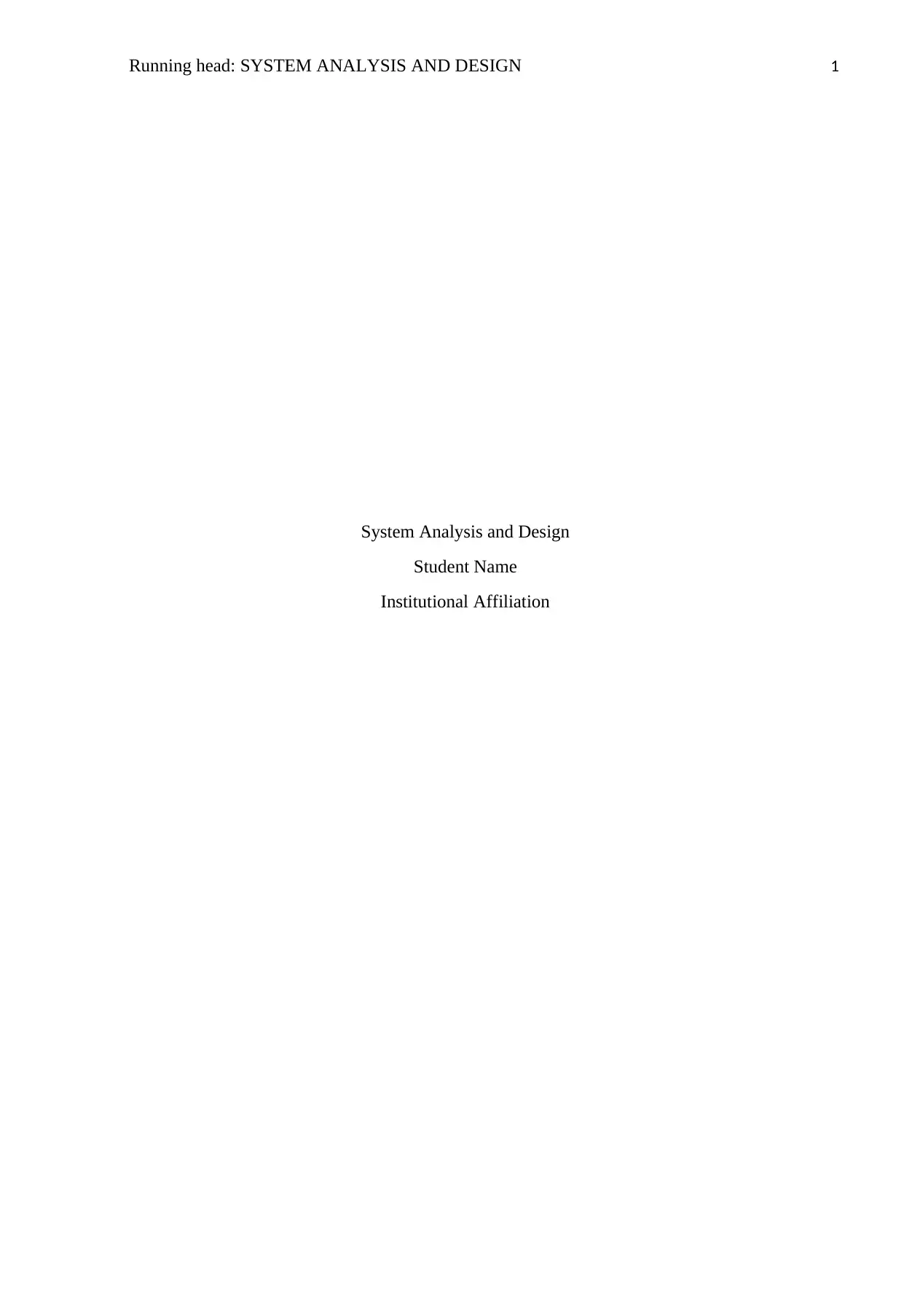
Running head: SYSTEM ANALYSIS AND DESIGN 1
System Analysis and Design
Student Name
Institutional Affiliation
System Analysis and Design
Student Name
Institutional Affiliation
Paraphrase This Document
Need a fresh take? Get an instant paraphrase of this document with our AI Paraphraser
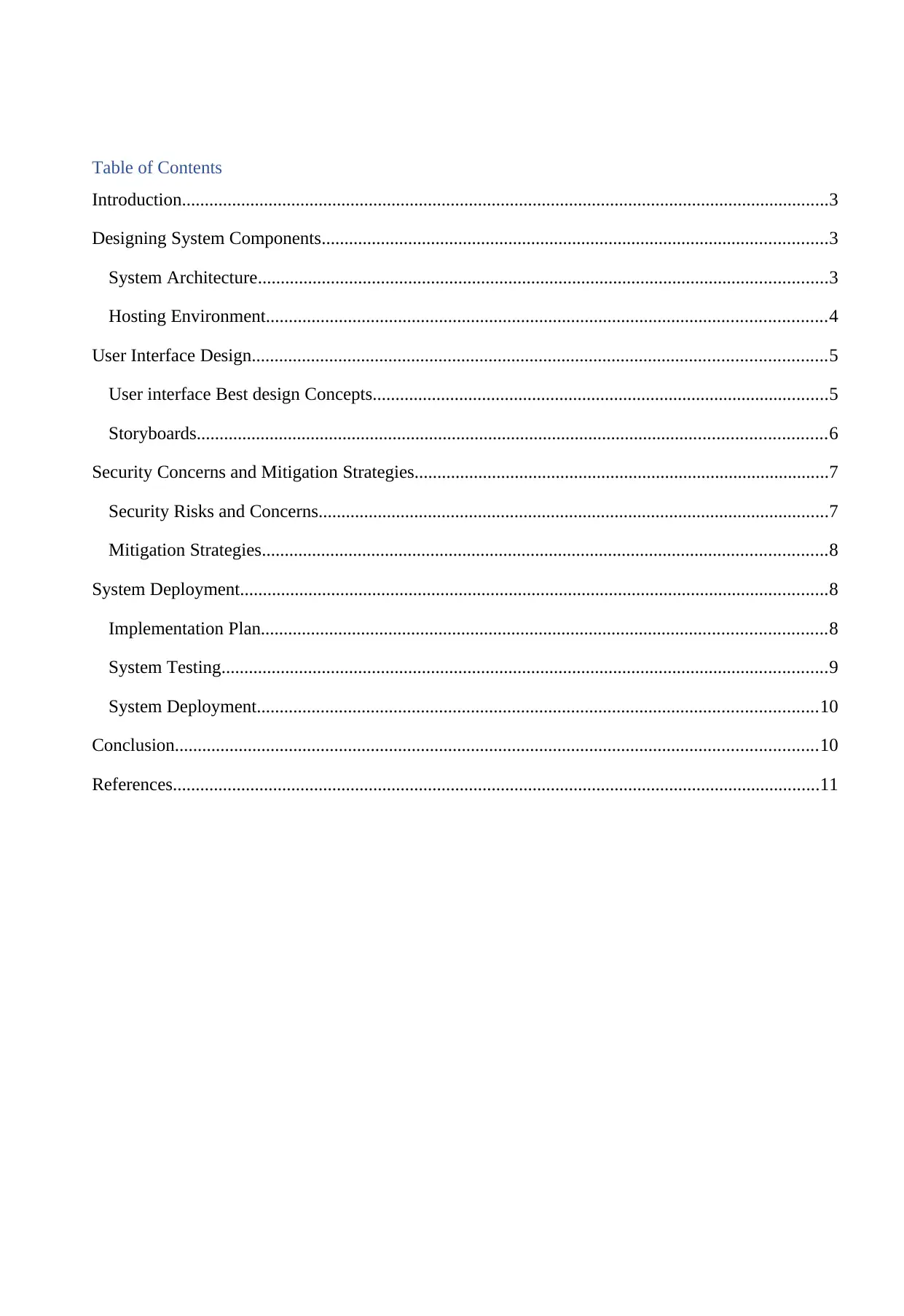
Table of Contents
Introduction..............................................................................................................................................3
Designing System Components...............................................................................................................3
System Architecture.............................................................................................................................3
Hosting Environment...........................................................................................................................4
User Interface Design..............................................................................................................................5
User interface Best design Concepts....................................................................................................5
Storyboards..........................................................................................................................................6
Security Concerns and Mitigation Strategies...........................................................................................7
Security Risks and Concerns................................................................................................................7
Mitigation Strategies............................................................................................................................8
System Deployment.................................................................................................................................8
Implementation Plan............................................................................................................................8
System Testing.....................................................................................................................................9
System Deployment...........................................................................................................................10
Conclusion.............................................................................................................................................10
References..............................................................................................................................................11
Introduction..............................................................................................................................................3
Designing System Components...............................................................................................................3
System Architecture.............................................................................................................................3
Hosting Environment...........................................................................................................................4
User Interface Design..............................................................................................................................5
User interface Best design Concepts....................................................................................................5
Storyboards..........................................................................................................................................6
Security Concerns and Mitigation Strategies...........................................................................................7
Security Risks and Concerns................................................................................................................7
Mitigation Strategies............................................................................................................................8
System Deployment.................................................................................................................................8
Implementation Plan............................................................................................................................8
System Testing.....................................................................................................................................9
System Deployment...........................................................................................................................10
Conclusion.............................................................................................................................................10
References..............................................................................................................................................11
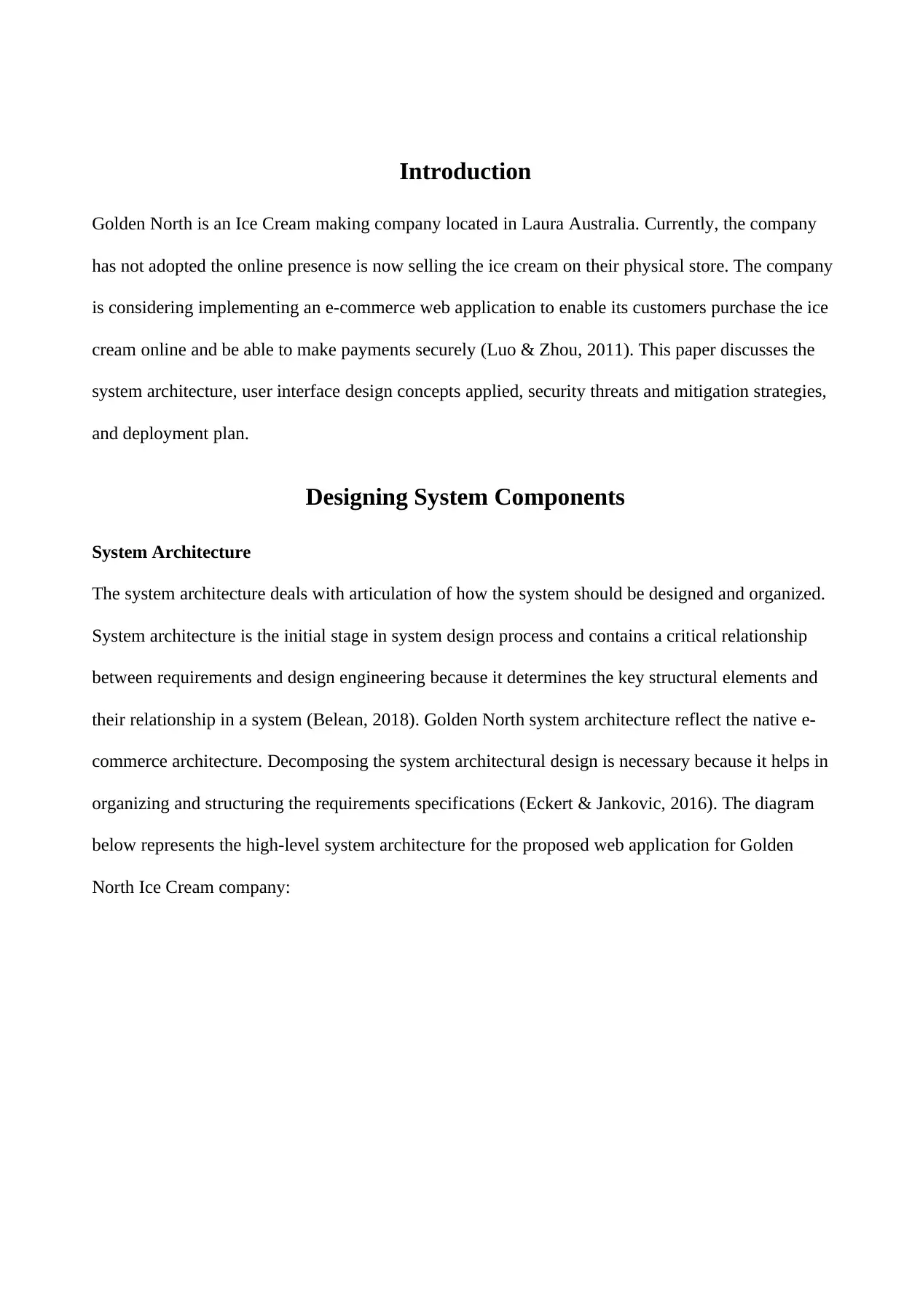
Introduction
Golden North is an Ice Cream making company located in Laura Australia. Currently, the company
has not adopted the online presence is now selling the ice cream on their physical store. The company
is considering implementing an e-commerce web application to enable its customers purchase the ice
cream online and be able to make payments securely (Luo & Zhou, 2011). This paper discusses the
system architecture, user interface design concepts applied, security threats and mitigation strategies,
and deployment plan.
Designing System Components
System Architecture
The system architecture deals with articulation of how the system should be designed and organized.
System architecture is the initial stage in system design process and contains a critical relationship
between requirements and design engineering because it determines the key structural elements and
their relationship in a system (Belean, 2018). Golden North system architecture reflect the native e-
commerce architecture. Decomposing the system architectural design is necessary because it helps in
organizing and structuring the requirements specifications (Eckert & Jankovic, 2016). The diagram
below represents the high-level system architecture for the proposed web application for Golden
North Ice Cream company:
Golden North is an Ice Cream making company located in Laura Australia. Currently, the company
has not adopted the online presence is now selling the ice cream on their physical store. The company
is considering implementing an e-commerce web application to enable its customers purchase the ice
cream online and be able to make payments securely (Luo & Zhou, 2011). This paper discusses the
system architecture, user interface design concepts applied, security threats and mitigation strategies,
and deployment plan.
Designing System Components
System Architecture
The system architecture deals with articulation of how the system should be designed and organized.
System architecture is the initial stage in system design process and contains a critical relationship
between requirements and design engineering because it determines the key structural elements and
their relationship in a system (Belean, 2018). Golden North system architecture reflect the native e-
commerce architecture. Decomposing the system architectural design is necessary because it helps in
organizing and structuring the requirements specifications (Eckert & Jankovic, 2016). The diagram
below represents the high-level system architecture for the proposed web application for Golden
North Ice Cream company:
⊘ This is a preview!⊘
Do you want full access?
Subscribe today to unlock all pages.

Trusted by 1+ million students worldwide
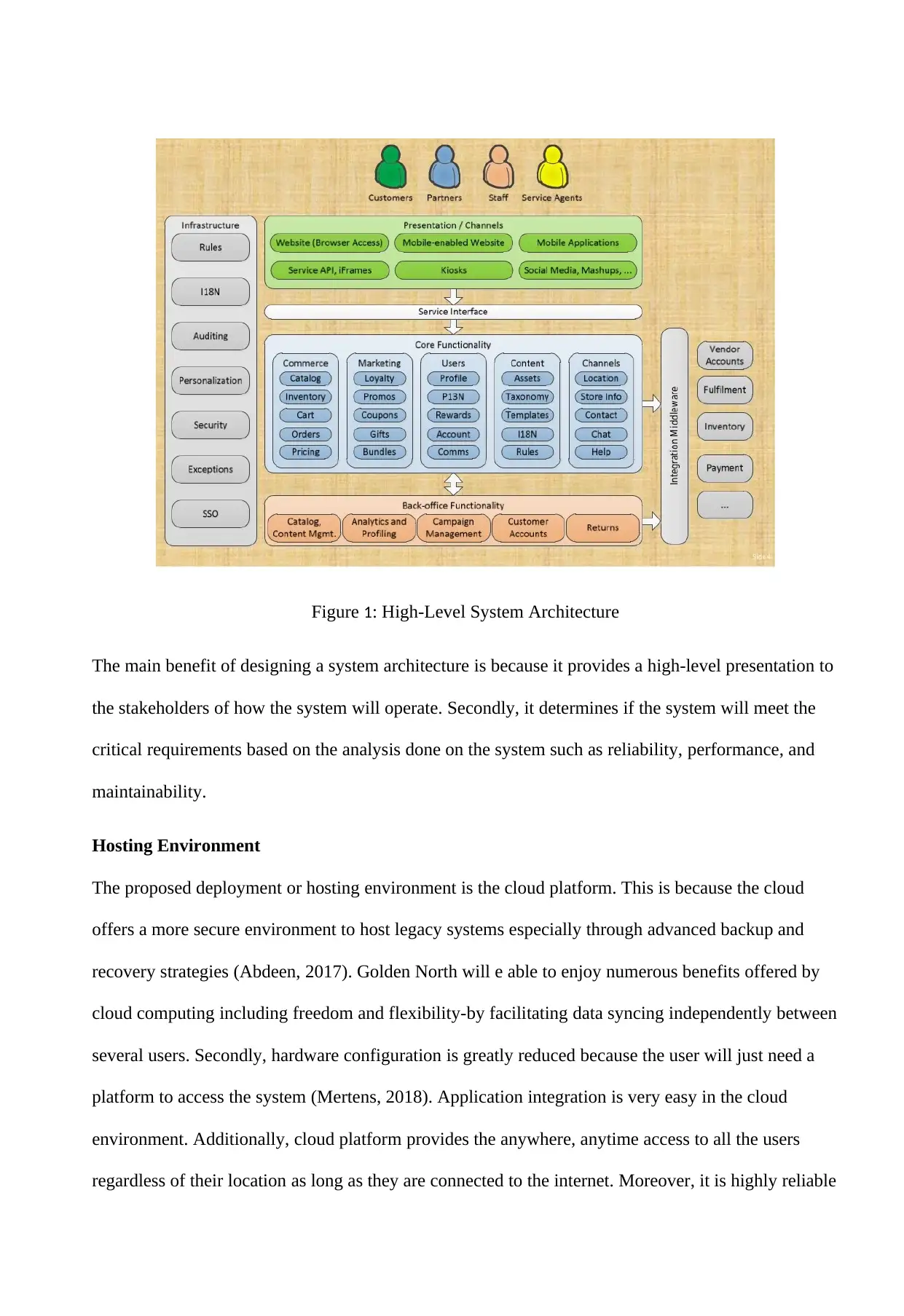
Figure 1: High-Level System Architecture
The main benefit of designing a system architecture is because it provides a high-level presentation to
the stakeholders of how the system will operate. Secondly, it determines if the system will meet the
critical requirements based on the analysis done on the system such as reliability, performance, and
maintainability.
Hosting Environment
The proposed deployment or hosting environment is the cloud platform. This is because the cloud
offers a more secure environment to host legacy systems especially through advanced backup and
recovery strategies (Abdeen, 2017). Golden North will e able to enjoy numerous benefits offered by
cloud computing including freedom and flexibility-by facilitating data syncing independently between
several users. Secondly, hardware configuration is greatly reduced because the user will just need a
platform to access the system (Mertens, 2018). Application integration is very easy in the cloud
environment. Additionally, cloud platform provides the anywhere, anytime access to all the users
regardless of their location as long as they are connected to the internet. Moreover, it is highly reliable
The main benefit of designing a system architecture is because it provides a high-level presentation to
the stakeholders of how the system will operate. Secondly, it determines if the system will meet the
critical requirements based on the analysis done on the system such as reliability, performance, and
maintainability.
Hosting Environment
The proposed deployment or hosting environment is the cloud platform. This is because the cloud
offers a more secure environment to host legacy systems especially through advanced backup and
recovery strategies (Abdeen, 2017). Golden North will e able to enjoy numerous benefits offered by
cloud computing including freedom and flexibility-by facilitating data syncing independently between
several users. Secondly, hardware configuration is greatly reduced because the user will just need a
platform to access the system (Mertens, 2018). Application integration is very easy in the cloud
environment. Additionally, cloud platform provides the anywhere, anytime access to all the users
regardless of their location as long as they are connected to the internet. Moreover, it is highly reliable
Paraphrase This Document
Need a fresh take? Get an instant paraphrase of this document with our AI Paraphraser
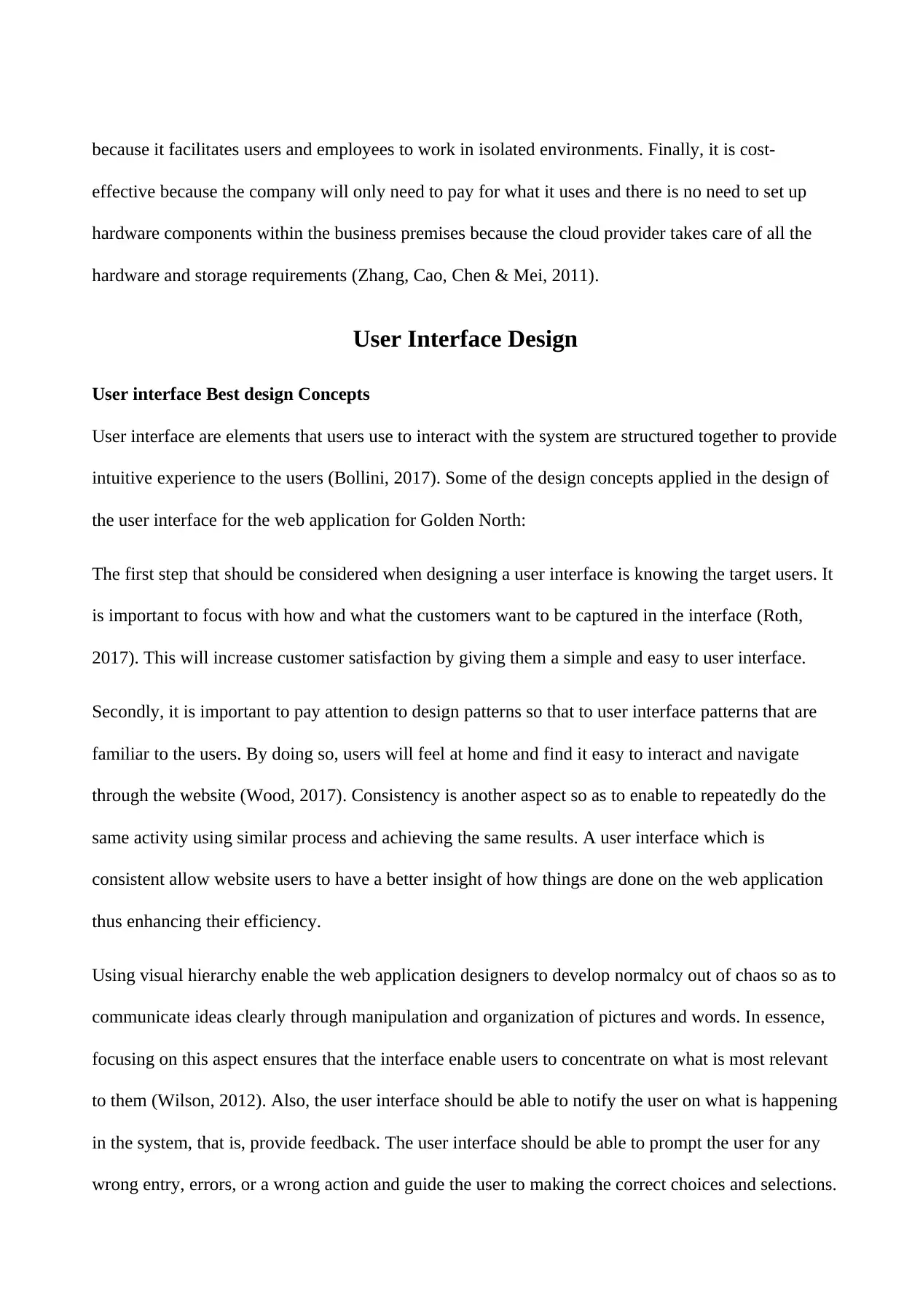
because it facilitates users and employees to work in isolated environments. Finally, it is cost-
effective because the company will only need to pay for what it uses and there is no need to set up
hardware components within the business premises because the cloud provider takes care of all the
hardware and storage requirements (Zhang, Cao, Chen & Mei, 2011).
User Interface Design
User interface Best design Concepts
User interface are elements that users use to interact with the system are structured together to provide
intuitive experience to the users (Bollini, 2017). Some of the design concepts applied in the design of
the user interface for the web application for Golden North:
The first step that should be considered when designing a user interface is knowing the target users. It
is important to focus with how and what the customers want to be captured in the interface (Roth,
2017). This will increase customer satisfaction by giving them a simple and easy to user interface.
Secondly, it is important to pay attention to design patterns so that to user interface patterns that are
familiar to the users. By doing so, users will feel at home and find it easy to interact and navigate
through the website (Wood, 2017). Consistency is another aspect so as to enable to repeatedly do the
same activity using similar process and achieving the same results. A user interface which is
consistent allow website users to have a better insight of how things are done on the web application
thus enhancing their efficiency.
Using visual hierarchy enable the web application designers to develop normalcy out of chaos so as to
communicate ideas clearly through manipulation and organization of pictures and words. In essence,
focusing on this aspect ensures that the interface enable users to concentrate on what is most relevant
to them (Wilson, 2012). Also, the user interface should be able to notify the user on what is happening
in the system, that is, provide feedback. The user interface should be able to prompt the user for any
wrong entry, errors, or a wrong action and guide the user to making the correct choices and selections.
effective because the company will only need to pay for what it uses and there is no need to set up
hardware components within the business premises because the cloud provider takes care of all the
hardware and storage requirements (Zhang, Cao, Chen & Mei, 2011).
User Interface Design
User interface Best design Concepts
User interface are elements that users use to interact with the system are structured together to provide
intuitive experience to the users (Bollini, 2017). Some of the design concepts applied in the design of
the user interface for the web application for Golden North:
The first step that should be considered when designing a user interface is knowing the target users. It
is important to focus with how and what the customers want to be captured in the interface (Roth,
2017). This will increase customer satisfaction by giving them a simple and easy to user interface.
Secondly, it is important to pay attention to design patterns so that to user interface patterns that are
familiar to the users. By doing so, users will feel at home and find it easy to interact and navigate
through the website (Wood, 2017). Consistency is another aspect so as to enable to repeatedly do the
same activity using similar process and achieving the same results. A user interface which is
consistent allow website users to have a better insight of how things are done on the web application
thus enhancing their efficiency.
Using visual hierarchy enable the web application designers to develop normalcy out of chaos so as to
communicate ideas clearly through manipulation and organization of pictures and words. In essence,
focusing on this aspect ensures that the interface enable users to concentrate on what is most relevant
to them (Wilson, 2012). Also, the user interface should be able to notify the user on what is happening
in the system, that is, provide feedback. The user interface should be able to prompt the user for any
wrong entry, errors, or a wrong action and guide the user to making the correct choices and selections.
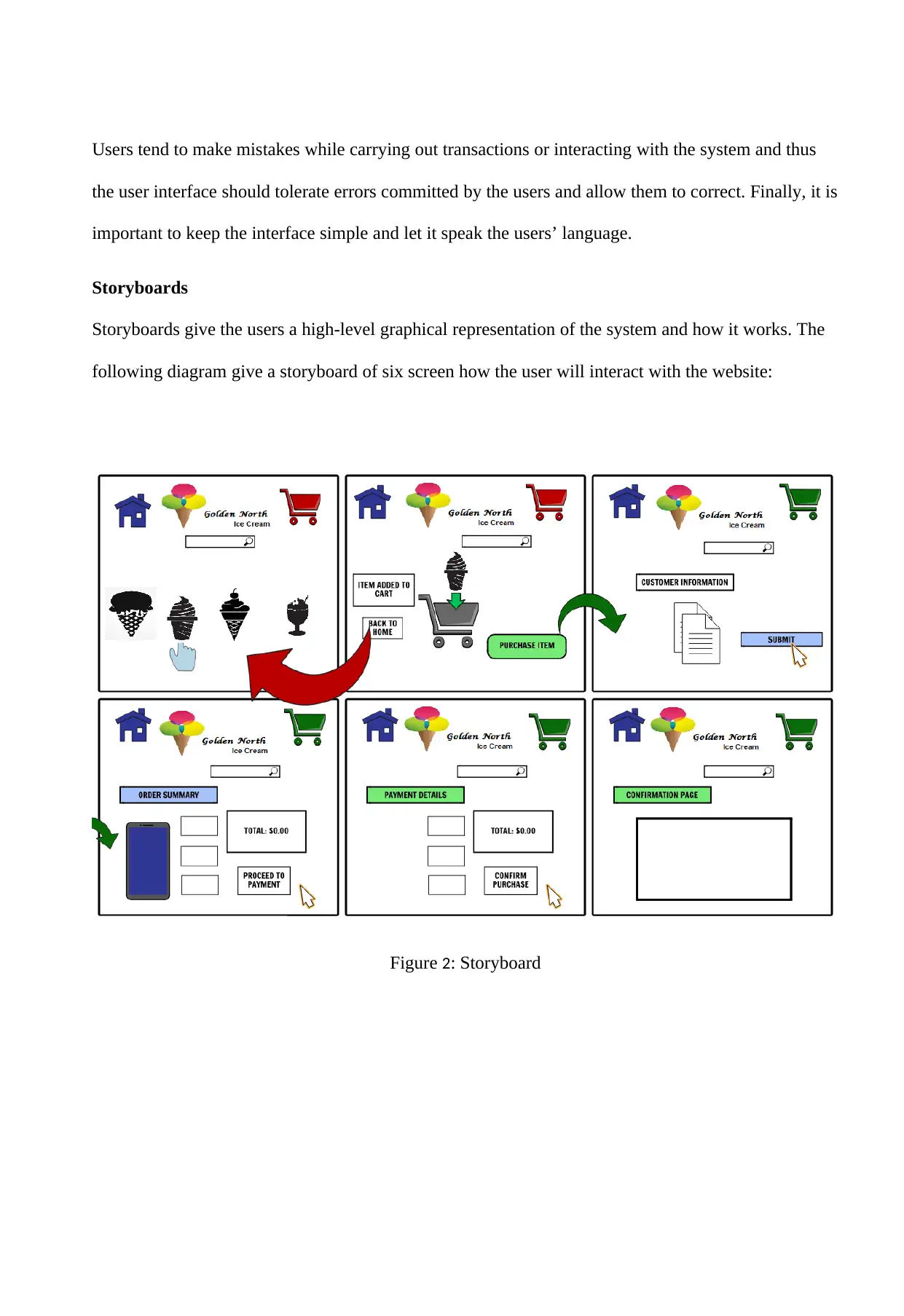
Users tend to make mistakes while carrying out transactions or interacting with the system and thus
the user interface should tolerate errors committed by the users and allow them to correct. Finally, it is
important to keep the interface simple and let it speak the users’ language.
Storyboards
Storyboards give the users a high-level graphical representation of the system and how it works. The
following diagram give a storyboard of six screen how the user will interact with the website:
Figure 2: Storyboard
the user interface should tolerate errors committed by the users and allow them to correct. Finally, it is
important to keep the interface simple and let it speak the users’ language.
Storyboards
Storyboards give the users a high-level graphical representation of the system and how it works. The
following diagram give a storyboard of six screen how the user will interact with the website:
Figure 2: Storyboard
⊘ This is a preview!⊘
Do you want full access?
Subscribe today to unlock all pages.

Trusted by 1+ million students worldwide
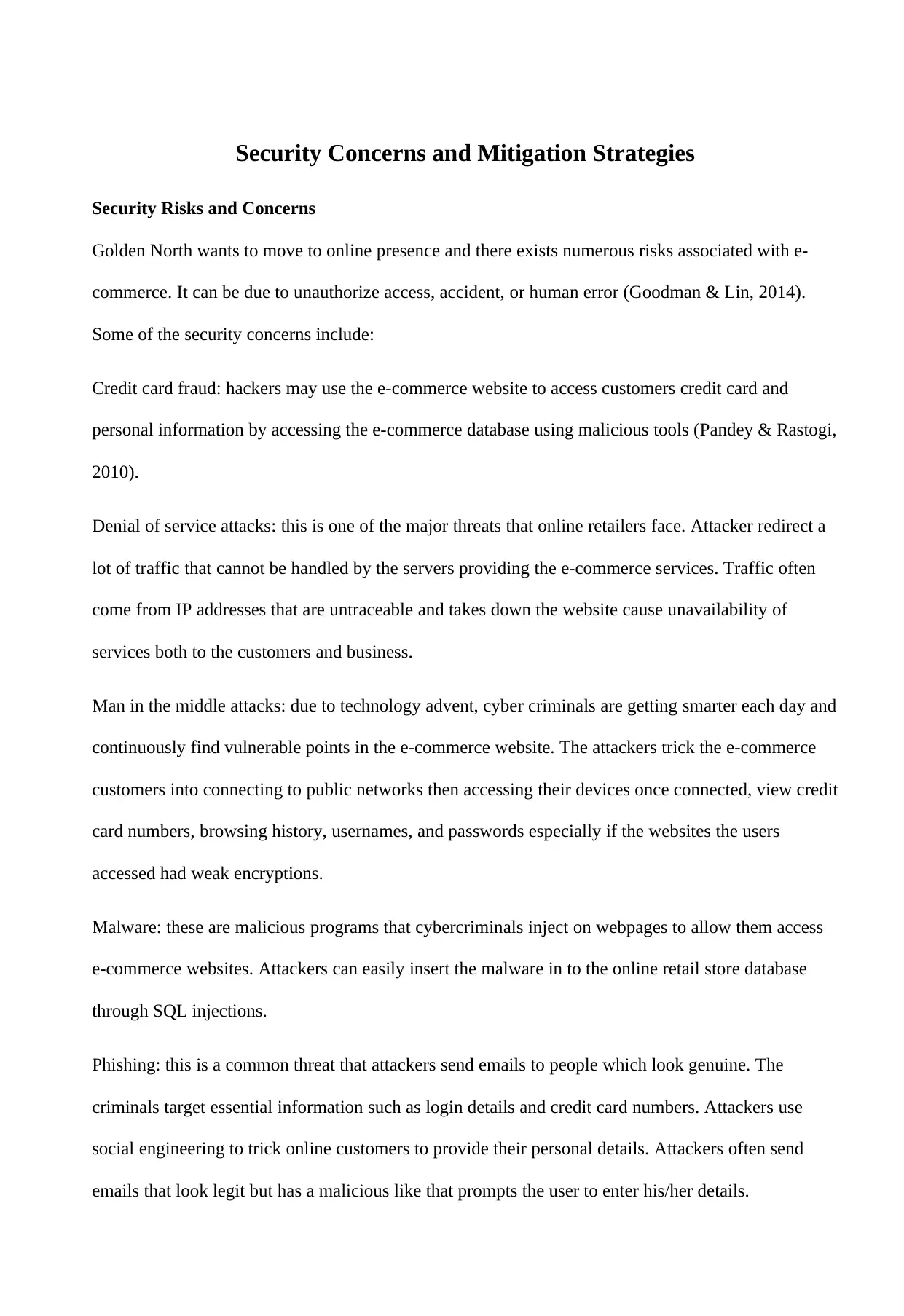
Security Concerns and Mitigation Strategies
Security Risks and Concerns
Golden North wants to move to online presence and there exists numerous risks associated with e-
commerce. It can be due to unauthorize access, accident, or human error (Goodman & Lin, 2014).
Some of the security concerns include:
Credit card fraud: hackers may use the e-commerce website to access customers credit card and
personal information by accessing the e-commerce database using malicious tools (Pandey & Rastogi,
2010).
Denial of service attacks: this is one of the major threats that online retailers face. Attacker redirect a
lot of traffic that cannot be handled by the servers providing the e-commerce services. Traffic often
come from IP addresses that are untraceable and takes down the website cause unavailability of
services both to the customers and business.
Man in the middle attacks: due to technology advent, cyber criminals are getting smarter each day and
continuously find vulnerable points in the e-commerce website. The attackers trick the e-commerce
customers into connecting to public networks then accessing their devices once connected, view credit
card numbers, browsing history, usernames, and passwords especially if the websites the users
accessed had weak encryptions.
Malware: these are malicious programs that cybercriminals inject on webpages to allow them access
e-commerce websites. Attackers can easily insert the malware in to the online retail store database
through SQL injections.
Phishing: this is a common threat that attackers send emails to people which look genuine. The
criminals target essential information such as login details and credit card numbers. Attackers use
social engineering to trick online customers to provide their personal details. Attackers often send
emails that look legit but has a malicious like that prompts the user to enter his/her details.
Security Risks and Concerns
Golden North wants to move to online presence and there exists numerous risks associated with e-
commerce. It can be due to unauthorize access, accident, or human error (Goodman & Lin, 2014).
Some of the security concerns include:
Credit card fraud: hackers may use the e-commerce website to access customers credit card and
personal information by accessing the e-commerce database using malicious tools (Pandey & Rastogi,
2010).
Denial of service attacks: this is one of the major threats that online retailers face. Attacker redirect a
lot of traffic that cannot be handled by the servers providing the e-commerce services. Traffic often
come from IP addresses that are untraceable and takes down the website cause unavailability of
services both to the customers and business.
Man in the middle attacks: due to technology advent, cyber criminals are getting smarter each day and
continuously find vulnerable points in the e-commerce website. The attackers trick the e-commerce
customers into connecting to public networks then accessing their devices once connected, view credit
card numbers, browsing history, usernames, and passwords especially if the websites the users
accessed had weak encryptions.
Malware: these are malicious programs that cybercriminals inject on webpages to allow them access
e-commerce websites. Attackers can easily insert the malware in to the online retail store database
through SQL injections.
Phishing: this is a common threat that attackers send emails to people which look genuine. The
criminals target essential information such as login details and credit card numbers. Attackers use
social engineering to trick online customers to provide their personal details. Attackers often send
emails that look legit but has a malicious like that prompts the user to enter his/her details.
Paraphrase This Document
Need a fresh take? Get an instant paraphrase of this document with our AI Paraphraser
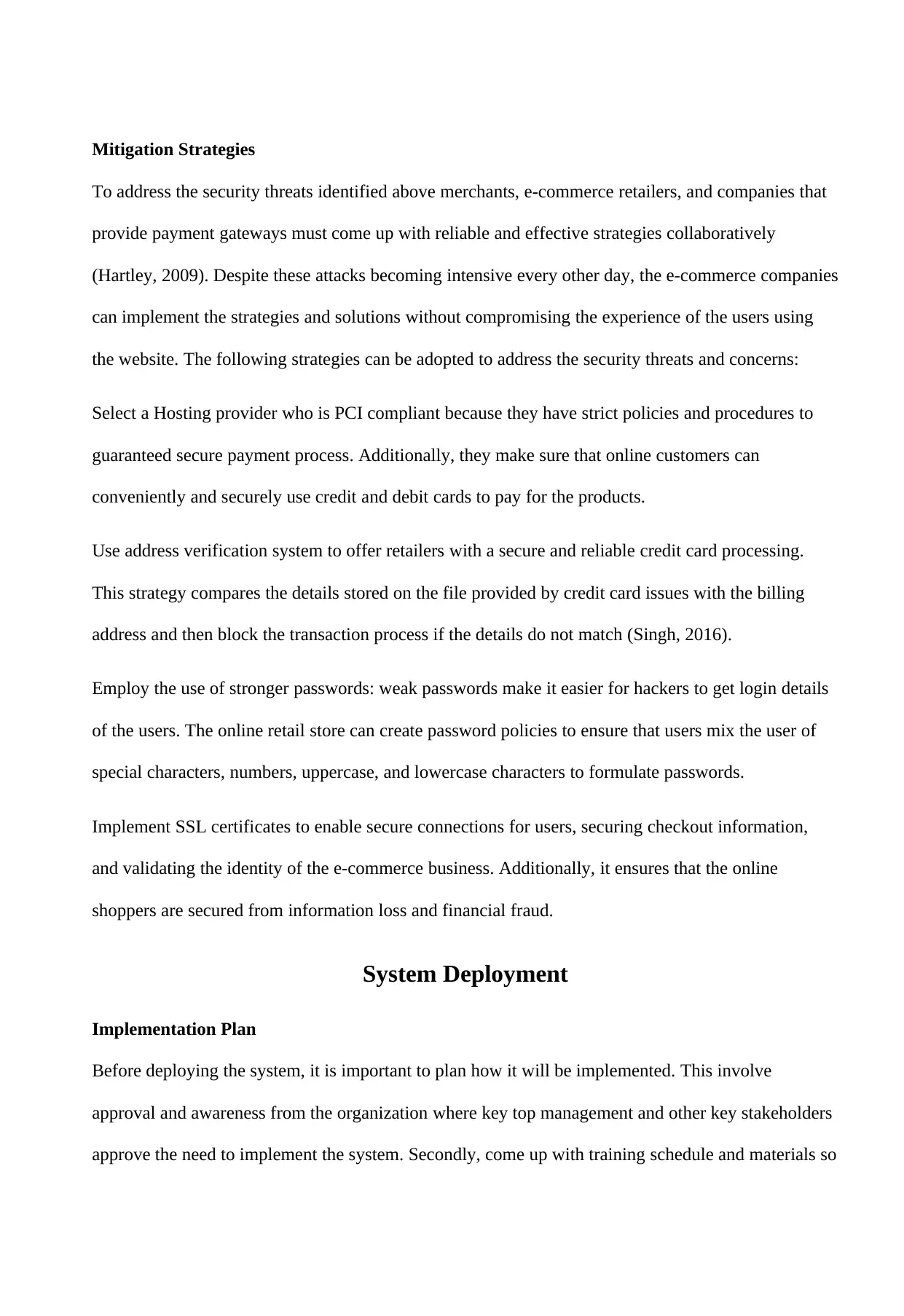
Mitigation Strategies
To address the security threats identified above merchants, e-commerce retailers, and companies that
provide payment gateways must come up with reliable and effective strategies collaboratively
(Hartley, 2009). Despite these attacks becoming intensive every other day, the e-commerce companies
can implement the strategies and solutions without compromising the experience of the users using
the website. The following strategies can be adopted to address the security threats and concerns:
Select a Hosting provider who is PCI compliant because they have strict policies and procedures to
guaranteed secure payment process. Additionally, they make sure that online customers can
conveniently and securely use credit and debit cards to pay for the products.
Use address verification system to offer retailers with a secure and reliable credit card processing.
This strategy compares the details stored on the file provided by credit card issues with the billing
address and then block the transaction process if the details do not match (Singh, 2016).
Employ the use of stronger passwords: weak passwords make it easier for hackers to get login details
of the users. The online retail store can create password policies to ensure that users mix the user of
special characters, numbers, uppercase, and lowercase characters to formulate passwords.
Implement SSL certificates to enable secure connections for users, securing checkout information,
and validating the identity of the e-commerce business. Additionally, it ensures that the online
shoppers are secured from information loss and financial fraud.
System Deployment
Implementation Plan
Before deploying the system, it is important to plan how it will be implemented. This involve
approval and awareness from the organization where key top management and other key stakeholders
approve the need to implement the system. Secondly, come up with training schedule and materials so
To address the security threats identified above merchants, e-commerce retailers, and companies that
provide payment gateways must come up with reliable and effective strategies collaboratively
(Hartley, 2009). Despite these attacks becoming intensive every other day, the e-commerce companies
can implement the strategies and solutions without compromising the experience of the users using
the website. The following strategies can be adopted to address the security threats and concerns:
Select a Hosting provider who is PCI compliant because they have strict policies and procedures to
guaranteed secure payment process. Additionally, they make sure that online customers can
conveniently and securely use credit and debit cards to pay for the products.
Use address verification system to offer retailers with a secure and reliable credit card processing.
This strategy compares the details stored on the file provided by credit card issues with the billing
address and then block the transaction process if the details do not match (Singh, 2016).
Employ the use of stronger passwords: weak passwords make it easier for hackers to get login details
of the users. The online retail store can create password policies to ensure that users mix the user of
special characters, numbers, uppercase, and lowercase characters to formulate passwords.
Implement SSL certificates to enable secure connections for users, securing checkout information,
and validating the identity of the e-commerce business. Additionally, it ensures that the online
shoppers are secured from information loss and financial fraud.
System Deployment
Implementation Plan
Before deploying the system, it is important to plan how it will be implemented. This involve
approval and awareness from the organization where key top management and other key stakeholders
approve the need to implement the system. Secondly, come up with training schedule and materials so
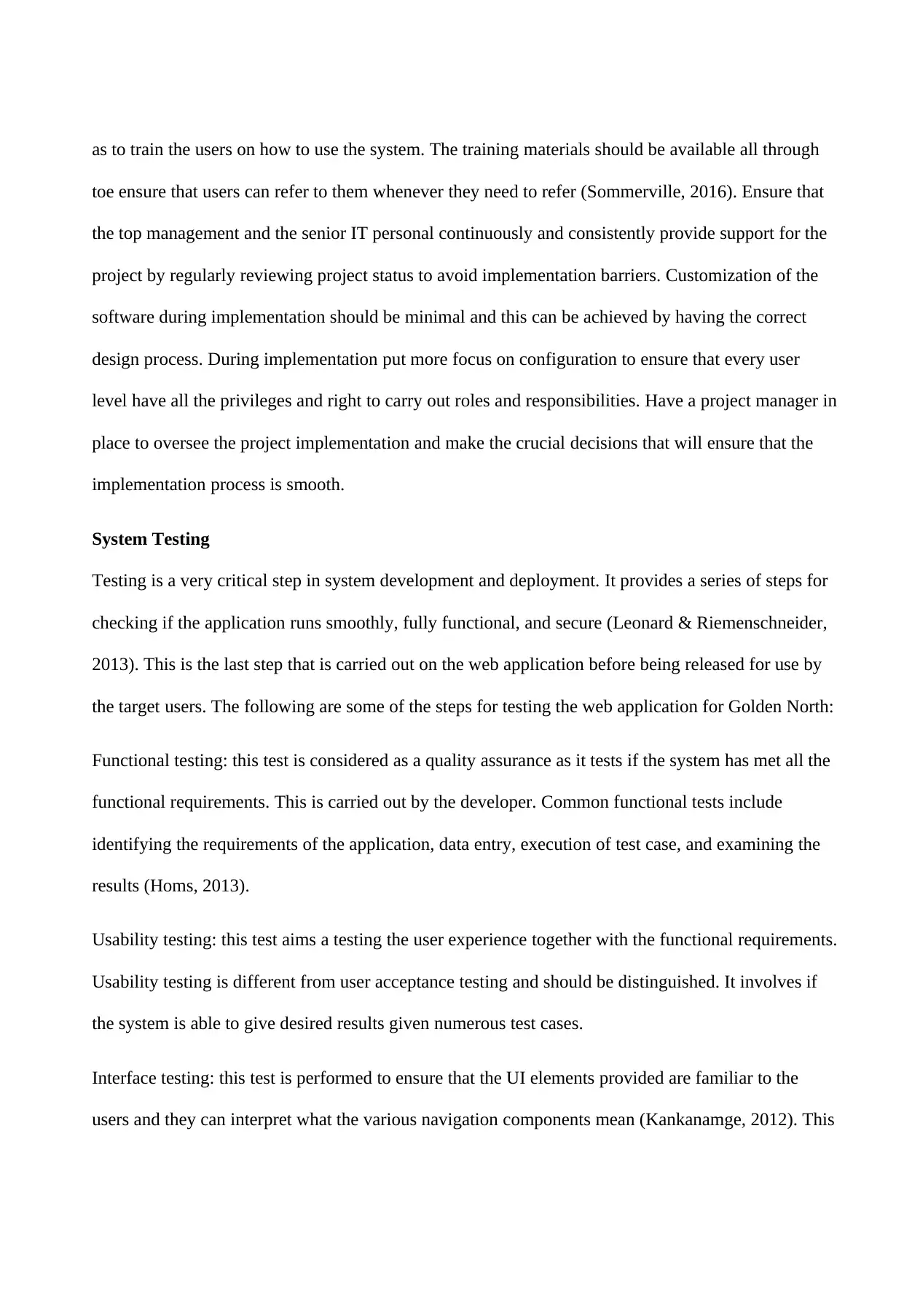
as to train the users on how to use the system. The training materials should be available all through
toe ensure that users can refer to them whenever they need to refer (Sommerville, 2016). Ensure that
the top management and the senior IT personal continuously and consistently provide support for the
project by regularly reviewing project status to avoid implementation barriers. Customization of the
software during implementation should be minimal and this can be achieved by having the correct
design process. During implementation put more focus on configuration to ensure that every user
level have all the privileges and right to carry out roles and responsibilities. Have a project manager in
place to oversee the project implementation and make the crucial decisions that will ensure that the
implementation process is smooth.
System Testing
Testing is a very critical step in system development and deployment. It provides a series of steps for
checking if the application runs smoothly, fully functional, and secure (Leonard & Riemenschneider,
2013). This is the last step that is carried out on the web application before being released for use by
the target users. The following are some of the steps for testing the web application for Golden North:
Functional testing: this test is considered as a quality assurance as it tests if the system has met all the
functional requirements. This is carried out by the developer. Common functional tests include
identifying the requirements of the application, data entry, execution of test case, and examining the
results (Homs, 2013).
Usability testing: this test aims a testing the user experience together with the functional requirements.
Usability testing is different from user acceptance testing and should be distinguished. It involves if
the system is able to give desired results given numerous test cases.
Interface testing: this test is performed to ensure that the UI elements provided are familiar to the
users and they can interpret what the various navigation components mean (Kankanamge, 2012). This
toe ensure that users can refer to them whenever they need to refer (Sommerville, 2016). Ensure that
the top management and the senior IT personal continuously and consistently provide support for the
project by regularly reviewing project status to avoid implementation barriers. Customization of the
software during implementation should be minimal and this can be achieved by having the correct
design process. During implementation put more focus on configuration to ensure that every user
level have all the privileges and right to carry out roles and responsibilities. Have a project manager in
place to oversee the project implementation and make the crucial decisions that will ensure that the
implementation process is smooth.
System Testing
Testing is a very critical step in system development and deployment. It provides a series of steps for
checking if the application runs smoothly, fully functional, and secure (Leonard & Riemenschneider,
2013). This is the last step that is carried out on the web application before being released for use by
the target users. The following are some of the steps for testing the web application for Golden North:
Functional testing: this test is considered as a quality assurance as it tests if the system has met all the
functional requirements. This is carried out by the developer. Common functional tests include
identifying the requirements of the application, data entry, execution of test case, and examining the
results (Homs, 2013).
Usability testing: this test aims a testing the user experience together with the functional requirements.
Usability testing is different from user acceptance testing and should be distinguished. It involves if
the system is able to give desired results given numerous test cases.
Interface testing: this test is performed to ensure that the UI elements provided are familiar to the
users and they can interpret what the various navigation components mean (Kankanamge, 2012). This
⊘ This is a preview!⊘
Do you want full access?
Subscribe today to unlock all pages.

Trusted by 1+ million students worldwide
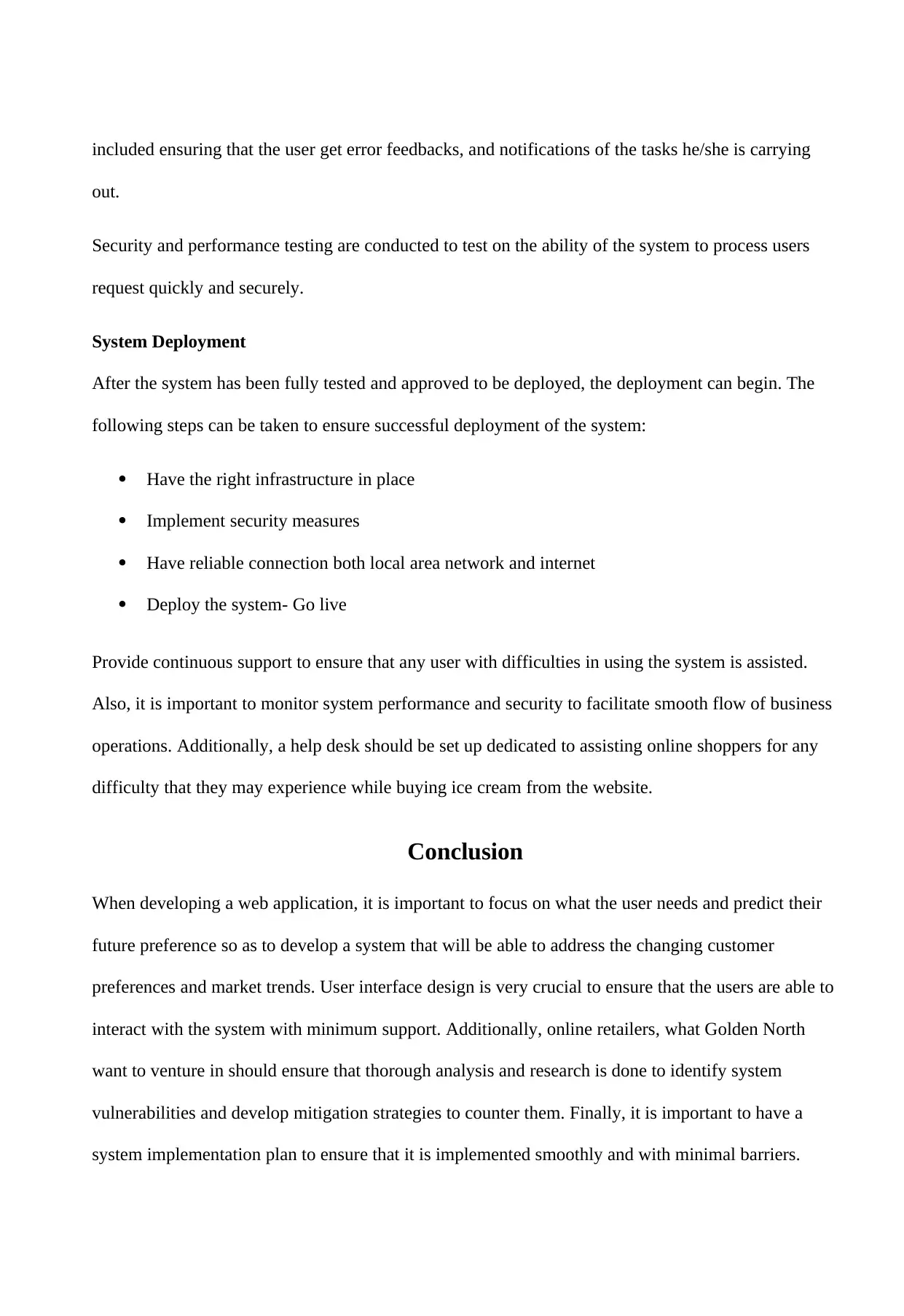
included ensuring that the user get error feedbacks, and notifications of the tasks he/she is carrying
out.
Security and performance testing are conducted to test on the ability of the system to process users
request quickly and securely.
System Deployment
After the system has been fully tested and approved to be deployed, the deployment can begin. The
following steps can be taken to ensure successful deployment of the system:
Have the right infrastructure in place
Implement security measures
Have reliable connection both local area network and internet
Deploy the system- Go live
Provide continuous support to ensure that any user with difficulties in using the system is assisted.
Also, it is important to monitor system performance and security to facilitate smooth flow of business
operations. Additionally, a help desk should be set up dedicated to assisting online shoppers for any
difficulty that they may experience while buying ice cream from the website.
Conclusion
When developing a web application, it is important to focus on what the user needs and predict their
future preference so as to develop a system that will be able to address the changing customer
preferences and market trends. User interface design is very crucial to ensure that the users are able to
interact with the system with minimum support. Additionally, online retailers, what Golden North
want to venture in should ensure that thorough analysis and research is done to identify system
vulnerabilities and develop mitigation strategies to counter them. Finally, it is important to have a
system implementation plan to ensure that it is implemented smoothly and with minimal barriers.
out.
Security and performance testing are conducted to test on the ability of the system to process users
request quickly and securely.
System Deployment
After the system has been fully tested and approved to be deployed, the deployment can begin. The
following steps can be taken to ensure successful deployment of the system:
Have the right infrastructure in place
Implement security measures
Have reliable connection both local area network and internet
Deploy the system- Go live
Provide continuous support to ensure that any user with difficulties in using the system is assisted.
Also, it is important to monitor system performance and security to facilitate smooth flow of business
operations. Additionally, a help desk should be set up dedicated to assisting online shoppers for any
difficulty that they may experience while buying ice cream from the website.
Conclusion
When developing a web application, it is important to focus on what the user needs and predict their
future preference so as to develop a system that will be able to address the changing customer
preferences and market trends. User interface design is very crucial to ensure that the users are able to
interact with the system with minimum support. Additionally, online retailers, what Golden North
want to venture in should ensure that thorough analysis and research is done to identify system
vulnerabilities and develop mitigation strategies to counter them. Finally, it is important to have a
system implementation plan to ensure that it is implemented smoothly and with minimal barriers.
Paraphrase This Document
Need a fresh take? Get an instant paraphrase of this document with our AI Paraphraser
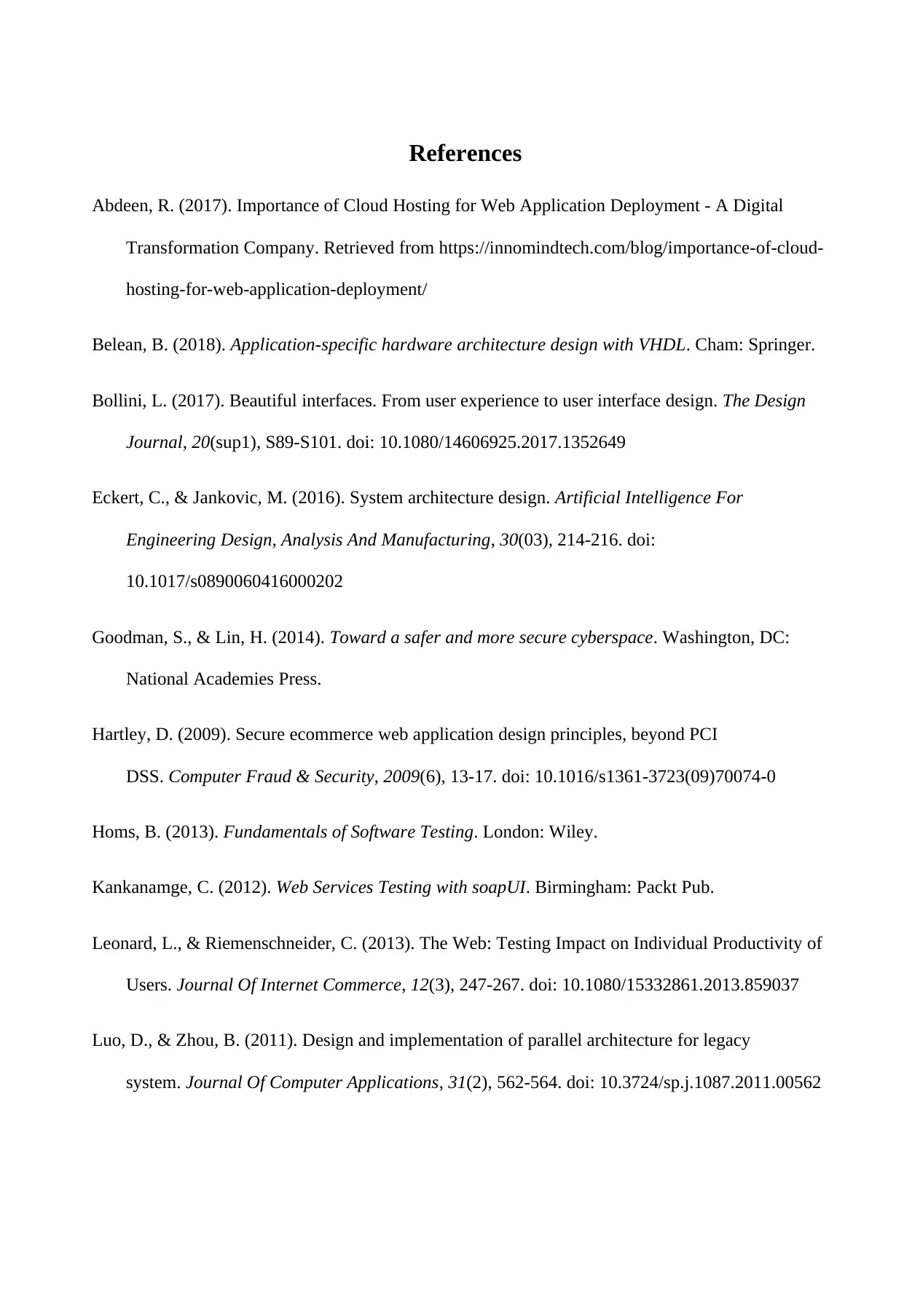
References
Abdeen, R. (2017). Importance of Cloud Hosting for Web Application Deployment - A Digital
Transformation Company. Retrieved from https://innomindtech.com/blog/importance-of-cloud-
hosting-for-web-application-deployment/
Belean, B. (2018). Application-specific hardware architecture design with VHDL. Cham: Springer.
Bollini, L. (2017). Beautiful interfaces. From user experience to user interface design. The Design
Journal, 20(sup1), S89-S101. doi: 10.1080/14606925.2017.1352649
Eckert, C., & Jankovic, M. (2016). System architecture design. Artificial Intelligence For
Engineering Design, Analysis And Manufacturing, 30(03), 214-216. doi:
10.1017/s0890060416000202
Goodman, S., & Lin, H. (2014). Toward a safer and more secure cyberspace. Washington, DC:
National Academies Press.
Hartley, D. (2009). Secure ecommerce web application design principles, beyond PCI
DSS. Computer Fraud & Security, 2009(6), 13-17. doi: 10.1016/s1361-3723(09)70074-0
Homs, B. (2013). Fundamentals of Software Testing. London: Wiley.
Kankanamge, C. (2012). Web Services Testing with soapUI. Birmingham: Packt Pub.
Leonard, L., & Riemenschneider, C. (2013). The Web: Testing Impact on Individual Productivity of
Users. Journal Of Internet Commerce, 12(3), 247-267. doi: 10.1080/15332861.2013.859037
Luo, D., & Zhou, B. (2011). Design and implementation of parallel architecture for legacy
system. Journal Of Computer Applications, 31(2), 562-564. doi: 10.3724/sp.j.1087.2011.00562
Abdeen, R. (2017). Importance of Cloud Hosting for Web Application Deployment - A Digital
Transformation Company. Retrieved from https://innomindtech.com/blog/importance-of-cloud-
hosting-for-web-application-deployment/
Belean, B. (2018). Application-specific hardware architecture design with VHDL. Cham: Springer.
Bollini, L. (2017). Beautiful interfaces. From user experience to user interface design. The Design
Journal, 20(sup1), S89-S101. doi: 10.1080/14606925.2017.1352649
Eckert, C., & Jankovic, M. (2016). System architecture design. Artificial Intelligence For
Engineering Design, Analysis And Manufacturing, 30(03), 214-216. doi:
10.1017/s0890060416000202
Goodman, S., & Lin, H. (2014). Toward a safer and more secure cyberspace. Washington, DC:
National Academies Press.
Hartley, D. (2009). Secure ecommerce web application design principles, beyond PCI
DSS. Computer Fraud & Security, 2009(6), 13-17. doi: 10.1016/s1361-3723(09)70074-0
Homs, B. (2013). Fundamentals of Software Testing. London: Wiley.
Kankanamge, C. (2012). Web Services Testing with soapUI. Birmingham: Packt Pub.
Leonard, L., & Riemenschneider, C. (2013). The Web: Testing Impact on Individual Productivity of
Users. Journal Of Internet Commerce, 12(3), 247-267. doi: 10.1080/15332861.2013.859037
Luo, D., & Zhou, B. (2011). Design and implementation of parallel architecture for legacy
system. Journal Of Computer Applications, 31(2), 562-564. doi: 10.3724/sp.j.1087.2011.00562
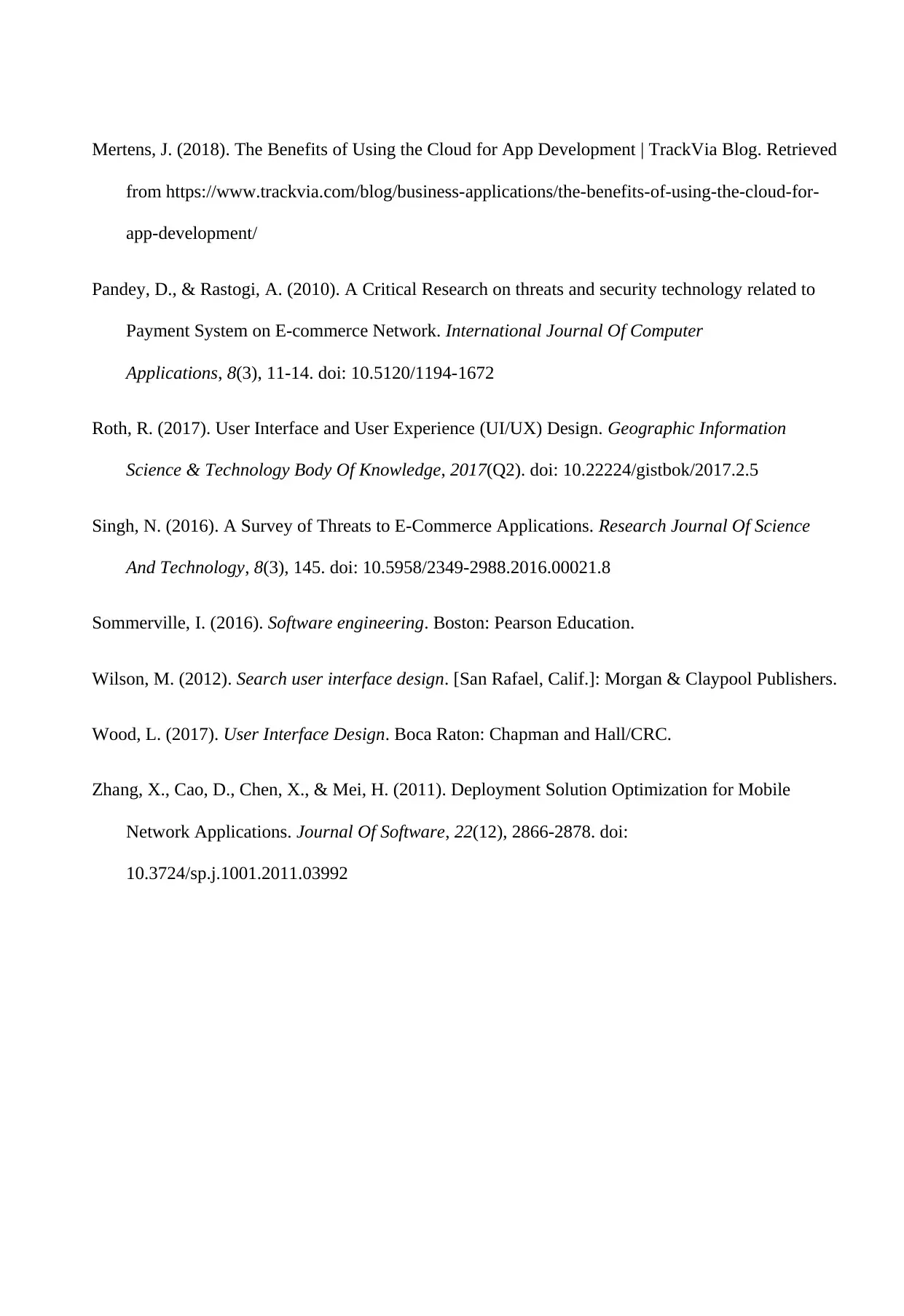
Mertens, J. (2018). The Benefits of Using the Cloud for App Development | TrackVia Blog. Retrieved
from https://www.trackvia.com/blog/business-applications/the-benefits-of-using-the-cloud-for-
app-development/
Pandey, D., & Rastogi, A. (2010). A Critical Research on threats and security technology related to
Payment System on E-commerce Network. International Journal Of Computer
Applications, 8(3), 11-14. doi: 10.5120/1194-1672
Roth, R. (2017). User Interface and User Experience (UI/UX) Design. Geographic Information
Science & Technology Body Of Knowledge, 2017(Q2). doi: 10.22224/gistbok/2017.2.5
Singh, N. (2016). A Survey of Threats to E-Commerce Applications. Research Journal Of Science
And Technology, 8(3), 145. doi: 10.5958/2349-2988.2016.00021.8
Sommerville, I. (2016). Software engineering. Boston: Pearson Education.
Wilson, M. (2012). Search user interface design. [San Rafael, Calif.]: Morgan & Claypool Publishers.
Wood, L. (2017). User Interface Design. Boca Raton: Chapman and Hall/CRC.
Zhang, X., Cao, D., Chen, X., & Mei, H. (2011). Deployment Solution Optimization for Mobile
Network Applications. Journal Of Software, 22(12), 2866-2878. doi:
10.3724/sp.j.1001.2011.03992
from https://www.trackvia.com/blog/business-applications/the-benefits-of-using-the-cloud-for-
app-development/
Pandey, D., & Rastogi, A. (2010). A Critical Research on threats and security technology related to
Payment System on E-commerce Network. International Journal Of Computer
Applications, 8(3), 11-14. doi: 10.5120/1194-1672
Roth, R. (2017). User Interface and User Experience (UI/UX) Design. Geographic Information
Science & Technology Body Of Knowledge, 2017(Q2). doi: 10.22224/gistbok/2017.2.5
Singh, N. (2016). A Survey of Threats to E-Commerce Applications. Research Journal Of Science
And Technology, 8(3), 145. doi: 10.5958/2349-2988.2016.00021.8
Sommerville, I. (2016). Software engineering. Boston: Pearson Education.
Wilson, M. (2012). Search user interface design. [San Rafael, Calif.]: Morgan & Claypool Publishers.
Wood, L. (2017). User Interface Design. Boca Raton: Chapman and Hall/CRC.
Zhang, X., Cao, D., Chen, X., & Mei, H. (2011). Deployment Solution Optimization for Mobile
Network Applications. Journal Of Software, 22(12), 2866-2878. doi:
10.3724/sp.j.1001.2011.03992
⊘ This is a preview!⊘
Do you want full access?
Subscribe today to unlock all pages.

Trusted by 1+ million students worldwide
1 out of 12
Related Documents
Your All-in-One AI-Powered Toolkit for Academic Success.
+13062052269
info@desklib.com
Available 24*7 on WhatsApp / Email
![[object Object]](/_next/static/media/star-bottom.7253800d.svg)
Unlock your academic potential
Copyright © 2020–2025 A2Z Services. All Rights Reserved. Developed and managed by ZUCOL.




